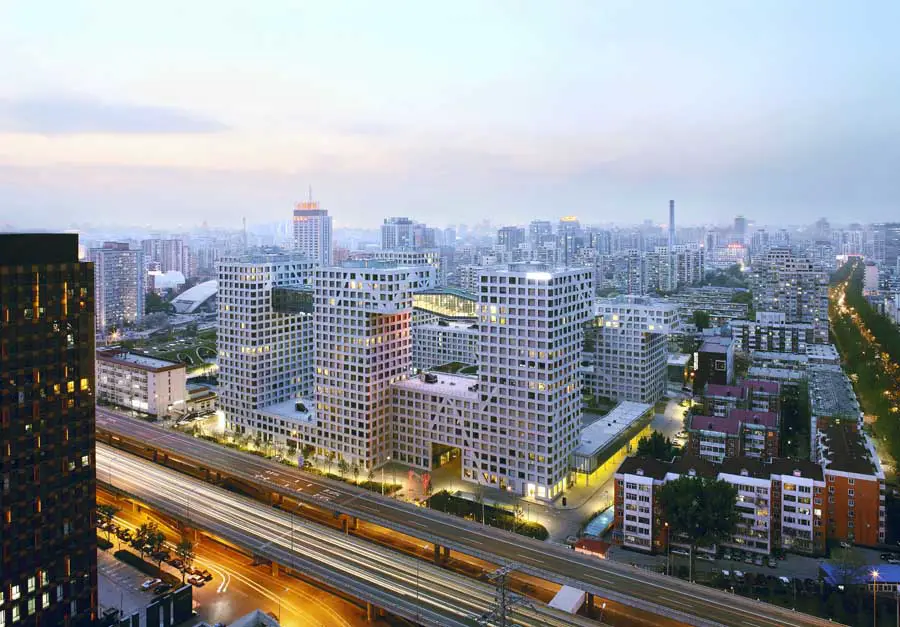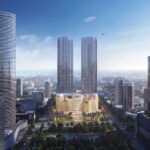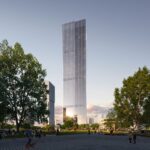Linked Hybrid Building, Beijing Steven Holl Architecture Images, China Apartments Design Architect
Linked Hybrid Beijing
Beijing Apartment Complex: Chinese Residential Building design by Steven Holl Architect
post updated 29 September 2024
Design: Steven Holl Architects
Named 2009 “Best Tall Building Overall” by the Council on Tall Buildings and Urban Habitat
Linked Hybrid Beijing Building
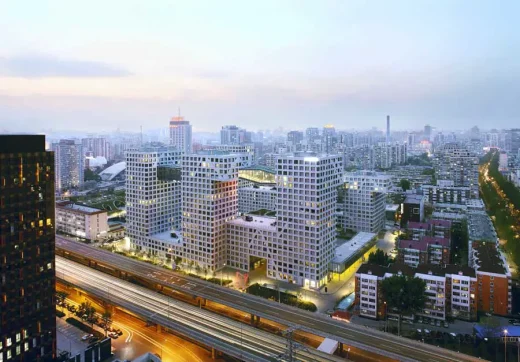
photo : Courtesy Steven Holl Architects, photograph © Shu He
27 Oct 2009
Linked Hybrid by Steven Holl Architects
New York, October 26, 2009 – The Council on Tall Buildings and Urban Habitat (CTBUH) has named Steven Holl Architects’ recently completed Linked Hybrid complex in Beijing the “CTBUH 2009 Best Tall Building Overall,” selecting it from among candidates from regions worldwide.
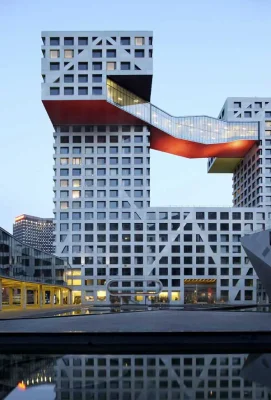
photo : Courtesy Steven Holl Architects, photograph © Shu He
Annually, the CTBUH recognizes one outstanding tall building from each of four geographical regions: Americas, Asia and Australia, Europe, and Middle East and Africa. Recipients must possess seamless integration of architectural form, structure, and building systems, as well as exhibit sustainable design qualities working to preserve the quality of urban life.
At the awards ceremony, CTBUH Awards Committee Chairman Gordon Gill stated, “This project is so rich in thought, both programmatically and architecturally. It presents an advances typology for dense urban living.”
CTBUH Executive Director Antony Wood said, “This project […] points the way forward for the intensified multi-use, multi-level connected cities of the future.”
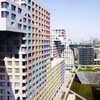
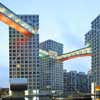
photos : Courtesy Steven Holl Architects, photograph © Shu He
The 220,000 square-meter Linked Hybrid complex includes eight towers linked by a ring of eight sky bridges housing a variety of public functions. The complex is located adjacent to the former city perimeter of Beijing. To counter the current privatized urban development trends in China, the complex forms a new twenty-first century porous urban space, inviting and open to the public from every side. In addition to more than 750 apartments, the complex includes public, commercial, and recreational facilities as well as a hotel and school.
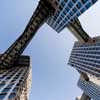
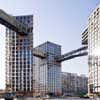
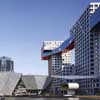
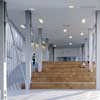
photos : Courtesy Steven Holl Architects, photograph © Shu He
With sightlines around, over, and through multifaceted spatial layers, this “city within a city” has as one of its central aims the concept of public space within an urban environment, and can support all the activities and programs for the daily lives of over 2500 inhabitants. From the 18th floor a multi-functional series of skybridges with swimming pool, fitness center, cafe, gallery, tearoom, etcetera connects the eight towers and offers views of the city. Together with the ground level passages and public programs, the skybridges aim to constantly generate random relationships; functioning as social condensers in a special experience of city life for both residents and visitors.
Geo-thermal wells (660 at 100 meters deep) provide Linked Hybrid with cooling in summer and heating in winter. All the water in the project is recycled, using a grey water system that reuses an estimated 220,000 liters of water each day, resulting in a 41% decrease in potable water usage. These strategies make Linked Hybrid one of the largest green residential projects.
Linked Hybrid information received 271009
Previously:
STEVEN HOLL ARCHITECTS Feb 2008
Linked Hybrid, Beijing, China – Apartment Complex

photo : Virgile Simon Bertrand
Filmic urban space; around, over and through multifaceted spatial layers, is one of the central aims of this Hybrid Building complex with over 700 apartments sited adjacent to the old city wall of Beijing. The aspiration of the developer Modern Group is for an ultra-modern expression of 21st Century ecological urban living, in this 220,000 sqm project.
Current development in Beijing is almost entirely “object buildings” and free standing towers. This “city within a city” envisions urban space as the central aim—as well as all the activities and programs that can support the daily life of over 2500 inhabitants: cafe’s, delis, laundry, dry cleaners, florists etc, line the main public passages. The eight towers are linked at the twentieth floor by a ring of cafes and services.
The polychrome architecture of Ancient China here inspires a new phenomenal dimension especially inscribing the “spatiality of the night”. The undersides of the cantilevered portions are colored membranes in night light glow. Misting fountains from the water retention basin activate the night light in colorful clouds, while the floating Cineplex centerpiece has partial images of its ongoing films projected on its undersides and reflected in the water.
Focused on the experience of passage of the body through spaces, the towers are organized to take movement, timing and sequence into consideration. The point of view changes with a slight ramp up, a slow right turn. The elevator displaces like a “jump cut” to another series of passages on a higher level, which pan across exhilarating peripheral views.
The encircled towers express a collective aspiration; rather than towers as isolated objects or private islands in an increasingly privatized city….the hope of a new type of collective 21stcentury space in the air is inscribed. Programmatically this loop aspires to be semi-lattice-like rather than simplistically linear. We have an initial series of programs. However we hope the sky-loop and the base-loop will constantly generate random relationships, just as a modern city does.
Mass housing in china has historically been standardized and repetitive. Our hope is to break the pattern; this new vertical urban sector aspires to individuation in urban living. Hundreds of different apartment layouts in a huge variety of types will be available among the 728 living spaces constructed here. And it should be emphasized, that even if this would lead to a commercial advantage, the reason for this individuation is philosophical as well.
Digitally driven prefabricated construction of the exterior structure of the eight towers allows for “beamless” ceilings. Every apartment has two exposures with no interior hallways. Principles of Feng-Shui are followed throughout the complex, which is aimed at sustainability “LEED Gold” rating.
Linked Hybrid images / information received 210308
Location: Beijing, China
Beijing Architecture Designs
Beijing Architecture Walking Tours by e-architect for groups
Beijing Architectural Designs
ZGC International Innovation Center, Zhongguancun area, Haidian District
Design: MAD Architects
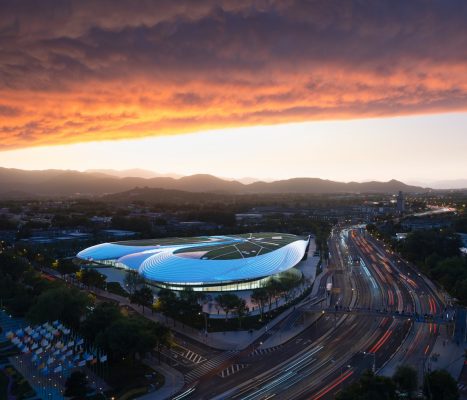
photo : Arch Exist
ZGC International Innovation Center Beijing
Courtyard 35
Design: WAY Studio
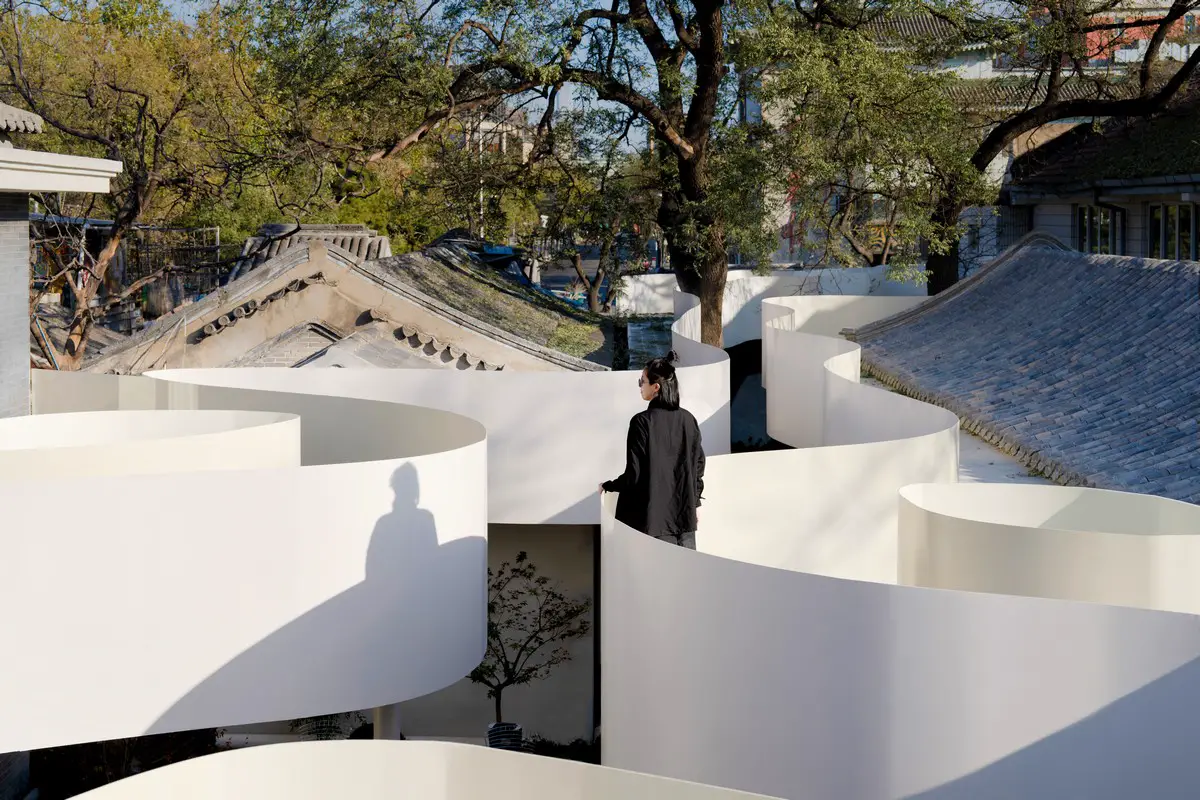
photo : Yuan Gao
Courtyard 35 Beijing
Beijing City Library, Tongzhou District
Design: Snøhetta, Oslo
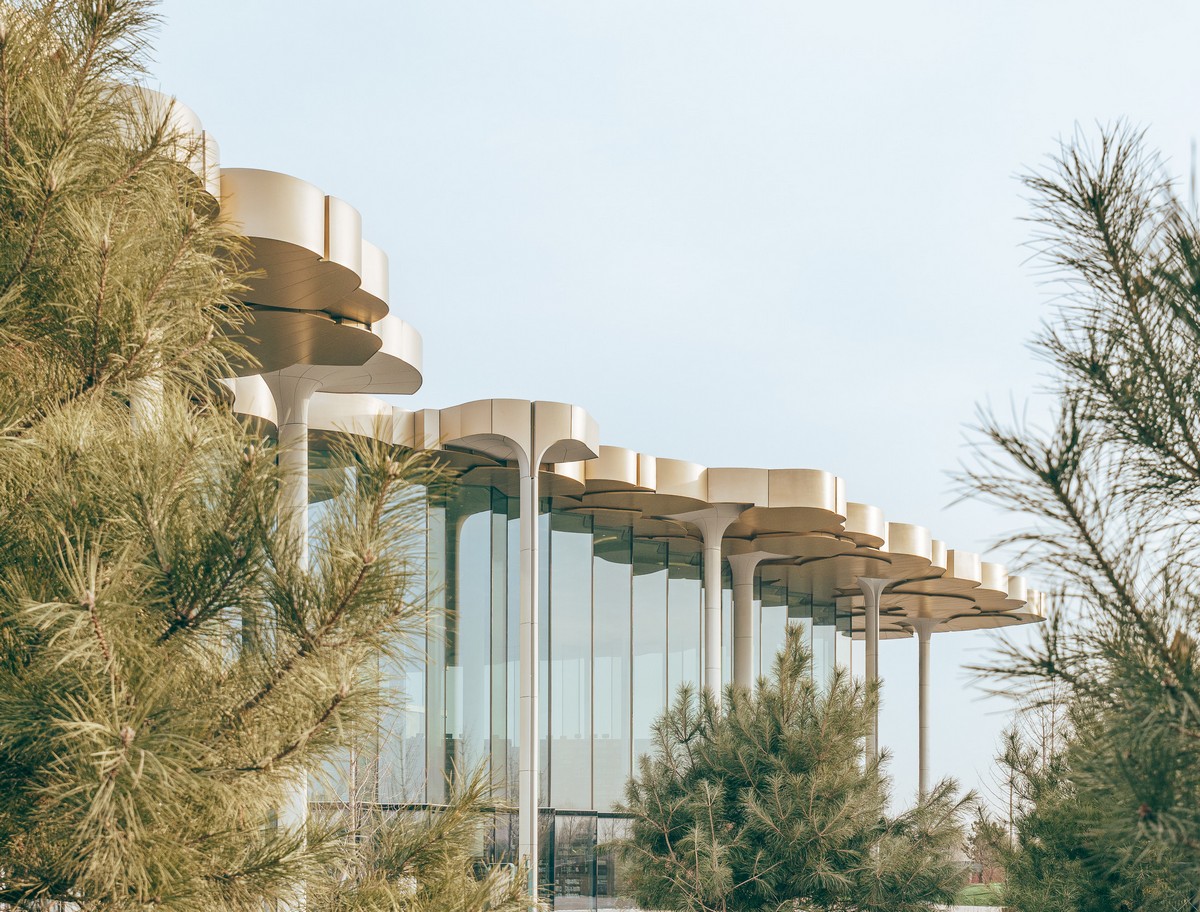
photo : Yumeng Zhu
Sub-Centre Library Beijing, China building
China Architecture
– chronological list
Chinese Architect – Design Practice Listings
Linked Hybrid China Steven Holl architects
Chengdu complex, also by Steven Holl Architects
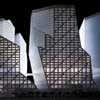
image : Iwan Baan
CTBUH 2009 award : Best Tall Building Overall
Comments / photos for the Linked Hybrid Building in China page welcome.

